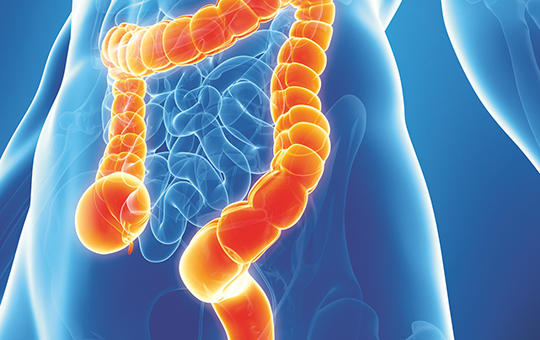The eLitMed.hu medical portal uses computer cookies for convenient operation. Detailed information can be found in the Cookie-policy.
Lege Artis Medicinae - 2023;33(3)
Content
[Assessing the changes of epidemiological indicators of cervical cancer in Hungary and on international scale between 2000 and 2019]
[Cervical cancer is considered as a preventable disease nowadays, however, mortality rate in Hungary is still higher than the European average. The aim of our research is to examine the indicators related to cervical screening in Hungary and at an international level.
We conducted a quantitative, retrospective study. Data were obtained from the OECD Health Statistics, the National Cancer Registry of Hungary and the Hungarian Central Statistical Office, for years 2000–2019. For OECD Member States, we selected the standardised mortality rate per 100,000 population and the screening participation rate (percent). Independent samples t test, linear and beta regression, as well as Pearson’s correlation and two-step cluster analysis were calculated (IBM-SPSS 25.0; STATA 14.2).
In 2000, prevalence of cervical cancer was 30.2/100,000 population, while the rate fell to 20.1 per 100,000 in 2019. The lowest incidence of cervical cancer was in 2010 (18.5 per 100,000). Screening participation rate in Hungary was 47.2% in 2006 and then steadily decreased over the years, in 2019 only the 30.2% of the 20–69-year-olds attended to screening. In 2019, the mortality rate in Hungary was 6.0/100,000, –30.2% lower than in 2000, but still higher than the European average (3.8/100,000). At the international level, we showed that where more people attended cervical cancer screening, fewer people died from cervical cancer, based on data of 2019 (r = –0.697; p = 0.017).
Achieving a higher participation rate on cervical cancer screening is still a challenge in Hungary, however, it can be said that the mortality rate have decreased. In addition to raise the health awareness among the population, it is also key to enhance the importance of the service providers” role and its potential to make the screening program even more effective.]
[Current treatment options in chronic myeloid leukemia]
[As a result of the introduction of tyrosine kinase inhibitors, chronic myeloid leukemia became from a fatal disease to a well-treatable chronic disease. The cause of the disease is the forming of the Philadelphia chromosome leading to the constitutively active BCR-ABL1 tyrosine kinase. With the use of tyrosine kinase inhibitors, chronic myeloid leukemia patients in the chronic phase nowadays have a life expectancy comparable to normal population. Choosing between available treatment options is influenced by several factors including the age and comorbidities of the patient, the goal of treatment and known side effects of the chosen drug. Treatment of patients refractory to tyrosine kinase inhibitors may be challenging nowadays as well. The solution could be the products with new mechanism of action, like asciminib, which is a BCR-ABL1 allosteric inhibitor and its efficacy is excellent in the above mentioned cases as well. Advanced stage and blastic phase chronic myeloid leukemia have a poor prognosis, beside tyrosine kinase inhibitors chemotherapy is necessary, and only allogenic hemopoetic stem cell transplantation may provide long term survival for these patients.]
[Considerations of introducing lung cancer screening with low dose computed tomography in Hungary]
[Prevalence of lung cancer is relatively high in Hungary, while its incidence is similar to the incidence in other Central European countries. The best solution to improve patients’ health perspectives is early diagnosis, namely the screening; the clinically successful method is computed tomography. In spite of the international and national guidelines, organized, national lung cancer screening programs are rare in the world. Beyond effectiveness, there is a need to investigate health care capacities, infrastructure and also economic aspects in order to introduce an organized public health screening program. In Hungary compared to the current situation (no existing organized, general healthcare screening) the screening of smokers between the age of 55 and 74 with low dose computed tomography would be cost-effective: the price of one quality adjusted life year is slightly more than 2 million HUF. At the initial years of the screening program the additional cost dominates, because either early or late stage the patients needed to treat are more, however, after ten years the program could become cost saving. Specification of screening to regions and/or socioeconomic groups could support a fair distribution of healthcare resources. For this, well organized focused and frequent campaigns are necessary. International examples indicate that the implementation of an effective screening program has two key points: monitoring and institutional background. ]
[Diverticulosis in general medical practice]
[Diverticulosis of the colon is a frequent disorder, affecting primarily elderly patients. Most of the cases are without any symptoms. Different forms of diverticulosis show a great variety, ranging from mild cases simulating irritable bowel syndrome to severe, life-threatening complicated diverticulitis. Risk factors of diverticulosis show similarity to those of cardiovascular diseases, but genetics also plays a role in the development of the disease. Genetics, lifestyle factors and certain drugs may also interact to cause diverticulitis. Diagnosis of acute diverticulitis is based on inflammatory laboratory parameters and imaging techniques, such as computer tomography (CT) and ultrasound (US). Therapy depends on the clinical picture; under suitable conditions, uncomplicated diverticulitis can be treated by the general practitioner. Prompt antibiotic treatment is not always indicated, however in case of immunocompromised, old, patients with severe comorbidities, or in case of symptoms of sepsis wide spectrum antibiotics should be administered. A patient with complicated diverticulitis should be referred to the hospital, mostly to the surgical department. Elective surgery should only be indicated in selected cases with long-term complications or a very poor quality of life. Diagnostics and therapy during colonoscopy or embolization of diverticular bleedings also need hospital care. The general practitioner is responsible for the prevention, diagnosis, secondary prevention of diverticulosis and its different manifestations, and in certain cases, also for the therapy.]
[Prevalence and prevention of fallings among the elderly during the COVID-19 pandemic]
[The coronavirus pandemic posed an enormous challenge for the whole society and within that the elderly, who could be considered the most vulnerable age group in terms of infections. In this publication, we look at how the pandemic has affected fall injuries in old age and their risk factors. In our paper, we aim to show the changes in the number of trauma cases due to falls during the coronavirus. We sought data on the atypical form of coronavirus infection, falls and whether falls can be considered as a consequence of the symptoms of the disease and their treatment. Our results show that fall prevention programs are needed to be continued among the elderly during and after the coronavirus pandemic with taking into account the changed circumstances caused by the pandemic.]
[Non-steroidal anti-inflammatory drugs and corticosteroids – focused on cardiovascular side effects]
[Painkillers are the most frequently purchased products worldwide, and a significant number of them are non-steroidal anti-inflammatory drugs. Despite their well-known gastrointestinal and cardiovascular side effects, further growth in their use is expected due to their pronounced effectiveness and changes in treatment recommendations. In aging, developed societies there is a steady increase in the number of patients with chronic pain. The use of painkillers, such as non-steroidal anti-inflammatory drugs, is associated with a significant improvement in the quality of life, and their use seems indispensable. Their mechanism of action causes their side effects, so they seem indefensible until now. It is important that both physicians and patients are aware of the possible aspects of the safe application.
To date, our most effective and fast-acting anti-inflammatory agents for reducing systemic inflammation are corticosteroids. As a real double-edged sword, they often save the lives of patients, while long-term use of them causes many side effects, especially on the metabolic and cardiovascular systems. However, their use is indispensable and, despite modern therapies, the number of patients receiving long-term corticosteroid treatment is constantly increasing in developed societies, not only for rheumatological, but also for many other indications. In case of corticosteroid treatment, a continuous assessment of risk-benefit ratio and regular monitoring of the cardiovascular risk is necessary.]
[Advantages of fixed-dose combination in the treatment of hypertension and hyperlipidemia]
[High blood pressure and high cholesterol level, which are among the most important modifiable risk factors of the atherosclerosis, often occur together. The importance of their co-treatment is underlined by the observation from the Mendelian randomization trials, which shows that the combination of a genetically 10 mmHg lower systolic blood pressure and concomitantly lower LDL cholesterol levels of 1 mmol/L reduce the lifetime risk of a large cardiovascular event by 78%. In the last decade, quite a lot of products have appeared in the therapeutic palette; the three active agents also include blood pressure and cholesterol lowering agents. They essentially belong to the more widely interpreted polypill category. The primary advantage of well-composed and effective triple fixed combinations over separately taken components is significantly better adherence, which reduces the frequency of cardiovascular events more effectively. The range of tablets created with the flexible active agents enables individual treatment.]
1.
Clinical Neuroscience
Is there any difference in mortality rates of atrial fibrillation detected before or after ischemic stroke?2.
Clinical Neuroscience
Factors influencing the level of stigma in Parkinson’s disease in western Turkey3.
Clinical Neuroscience
Neuropathic pain and mood disorders in earthquake survivors with peripheral nerve injuries4.
Journal of Nursing Theory and Practice
[Correlations of Sarcopenia, Frailty, Falls and Social Isolation – A Literature Review in the Light of Swedish Statistics]5.
Clinical Neuroscience
[Comparison of pain intensity measurements among patients with low-back pain]1.
2.
Clinical Neuroscience Proceedings
[A Magyar Stroke Társaság XVIII. Kongresszusa és a Magyar Neuroszonológiai Társaság XV. Konferenciája. Absztraktfüzet]3.
4.
Journal of Nursing Theory and Practice
[A selection of the entries submitted to the literary contest "Honorable mission: the joys and challenges of our profession" ]5.
Journal of Nursing Theory and Practice
[End of Life and Palliative Care of Newborns in the Nursing Context]












